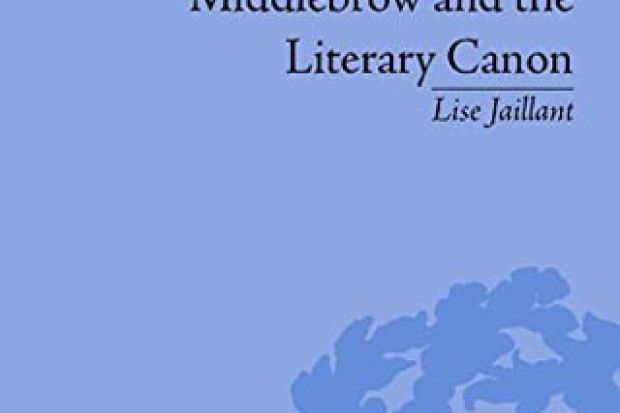This little masterpiece is part of the publisher’s series Literary Texts and the Popular Marketplace, the aim of which is to examine writing that “resists the uncritical embrace of the highbrow”. I could spend the rest of the review trying to work out what that means. It has all the precision of a subclause in a political party document. The words’ sense, as in George Orwell’s doublethink, is contradictory. How can a “highbrow”, whose raison d’être is fine discrimination, offer “an uncritical embrace”?
Thankfully Lise Jaillant is more careful in her use of English. Her finely written study focuses on the Modern Library, a cheap American reprint series that began in 1917. Her main argument is that the series did not, as previously claimed, maintain the barriers between the literati and hoi polloi. Detective fiction, for example, appeared alongside experimental novels, while classic works such as William Faulkner’s Sanctuary were packaged both as serious works and best-sellers. One of the many fascinating facts we learn from this book is that, in the Modern Library’s 1928 list of titles, James Joyce’s A Portrait of the Artist as a Young Man sold three times as many copies as Best Ghost Stories, a statistic to make cultural pessimists look at the contemporary wasteland and declare what a falling-off is here.
Jaillant discusses the categories of high, low and middle “brow”. The first signifies intellectual or artistic “superiority”, the second lack of discernment while the third, perhaps the most intriguing, refers to a person of the professional or managerial class who sought legitimacy via the authority of “taste, aesthetics and ‘culture’ ”. Jaillant claims that these terms came into use only after the Second World War as a symbolic way of controlling the masses, whose destructive power had been demonstrated all too clearly by Nazi Germany and Stalinist Russia. That may have been the case in the US, but the battle of the brows was very much a feature of English literary criticism well before Hitler invaded Poland as F. R. Leavis’ Mass Civilisation and Minority Culture (1930) demonstrates.
Although Jaillant is endlessly informative about the Modern Library – how it published books on science and psychoanalysis as well as novels, why Willa Cather refused to allow it to reprint her work, how it fought against “anti-obscenity” movements and so on – there is an unresolved tension at the heart of her argument. If the Modern Library sought to present each work as equal, partly by uniform covers, how was it also responsible for creating an American canon of literature? A canon depends on exclusion, on the idea of one work being “better” than another, but Jaillant’s point is that the Modern Library not only resisted such discriminations but actively fought against them. Nor does it help her case that none of the writers she chooses for study, from H. G. Wells to Woolf, could be described as popular. What’s more, the main audiences for the Modern Library were a culturally aspirant middle class and university literature departments; hardly a broad demographic.
But none of this detracts from what remains a solid investigation of an overlooked phenomenon. Graphs and illustrations lend substance to the various discussions. Students of Modernism will be grateful.
Modernism, Middlebrow and the Literary Canon
By Lise Jaillant
Pickering & Chatto, 224pp, £60.00 and £24.00
ISBN 9781848934931 and 9781781444559 (e-book)
Published 1 November 2014





